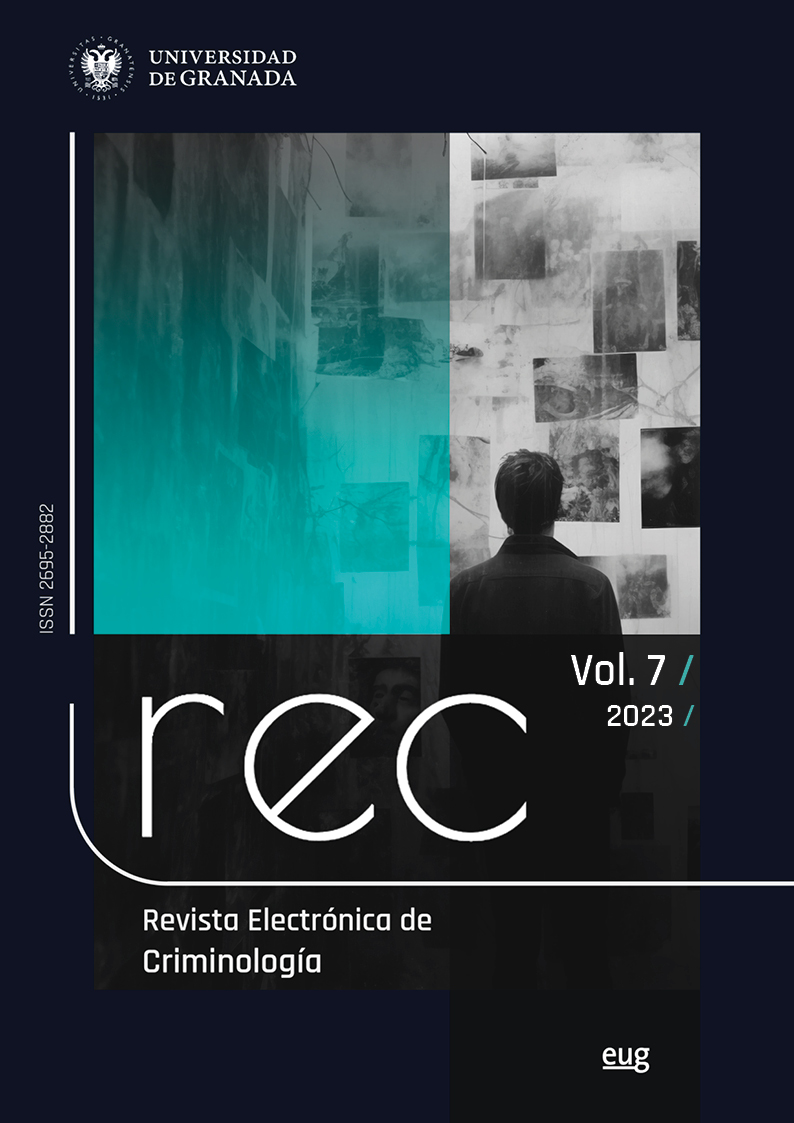Expert analysis of cybersecurity education aimed at non-technical population.
DOI:
https://doi.org/10.30827/rec.7.33186Keywords:
Cybersecurity, Cybercrime, Education, Awareness, InterdisciplinarityAbstract
In this study, 10 experts in the field of cybersecurity education were consulted for their opinions and perceptions. They were asked 3 developmental questions and 6 likert-type questions, with a final questionnaire to qualify the experts' validity. The questions refer to the education of the non-technical population and the current situation regarding it. Consensus has been found around the lack of awareness, knowledge and preparation of citizens in cybersecurity and cybercrime. Also the lack of more interdisciplinary teams and personnel from non-technical areas when facing the challenges of cybersecurity. A lack of adaptation of education to new needs was identified. The need to improve educational campaigns and update the measures implemented was also detected. As a result of all this, the need to readjust the dissemination campaigns and the constant updating of educational strategies became apparent.
References
ANDS (Asociación Nacional de Directores de Seguridad). (2021). Plan Estratégico contra la Cibercriminalidad. Asociación Nacional de Directores de Seguridad. Recuperado de https://directoresdeseguridad.es/2021/03/16/plan-estrategico-contra-la-cibercriminalidad/
Árpád, I. (2013). A Greater Involvement of Education in Fight Against Cybercrime. Procedia - Social and Behavioral Sciences, 83, 371–377. Doi: https://doi.org/10.1016/J.SBSPRO.2013.06.073
Cabero-Almenara, J., & Llorente, M. (2013). La aplicación del juicio de experto como técnica de evaluación de las tecnologías de la información y comunicación (TIC). Eduweb, 7(2), 11–22. Recuperado de http://tecnologiaedu.us.es/tecnoedu/images/stories/jca107.pdf
Coenraad, M., Pellicone, A., Ketelhut, D. J., Cukier, M., Plane, J., & Weintrop, D. (2020). Experiencing Cybersecurity One Game at a Time: A Systematic Review of Cybersecurity Digital Games. Simulation and Gaming, 51(5), 586–611. https://doi.org/10.1177/1046878120933312
DSN. (2019). Estrategia Nacional de Ciberseguridad 2019. Departamento de Seguridad Nacional, España. Recuperado de: https://www.dsn.gob.es/es/documento/estrategia-nacional-ciberseguridad-2019
Escobar-Pérez, J., & Cuervo-Martínez, Á. (2008). Validez de contenido y Juicio de Expertos: Una Aproximación a Su Utilización. Avances En Medición, 6, 27–36 . Recuperado de https://www.researchgate.net/publication/302438451_Validez_de_contenido_y_juicio_de_expertos_Una_aproximacion_a_su_utilizacion
García, L., & Fernández, S. J. (2008). Procedimiento de aplicación del trabajo creativo en grupo de expertos. Ingeniería Energética, XXIX (2),46-50. Consultado el 16 de Abril de 2022. Recuperado de https://www.redalyc.org/articulo.oa?id=329127758006
Ghernaouti-Helie, S. (2009). An Inclusive Information Society Needs a Global Approach of Information Security. 2009 International Conference on Availability, Reliability and Security, 658-662. DOI: 10.1109/ARES.2009.127
Hadlington, L., & Chivers, S. (2020). Segmentation Analysis of Susceptibility to Cybercrime: Exploring Individual Differences in Information Security Awareness and Personality Factors. Policing: A Journal of Policy and Practice, 14, 479-492. DOI:10.1093/police/pay027
López, J., Sánchez, F., Herrera, D., Martínez, F., Rubio, M., Gil, V., Santiago, A.M., & Gómez, M.A . (2021). Informe sobre la Cibercriminalidad en España. Dirección General de Coordinación y Estudios Secretaría de Estado de Seguridad . Ministerio del Interior, España. Recuperado de https://www.interior.gob.es/opencms/pdf/archivos-y-documentacion/documentacion-y-publicaciones/publicaciones-descargables/publicaciones-periodicas/informe-sobre-la-cibercriminalidad-en-Espana/Informe_cibercriminalidad_Espana_2021_126200212.pdf
Miró, F. (2021 ). Crimen, cibercrimen y COVID-19: desplazamiento (acelerado) de oportunidades y adaptación situacional de ciberdelitos. IDP. Revista de Internet, Derecho y Política, núm. 32 (marzo). UOC. http://dx.doi.org/10.7238/idp.v0i32.373815
ONTSI (Observatorio Nacional de Tecnología y Sociedad). (2022). Cómo se protege a la ciudadanía ante los ciberriesgos. Estudio sobre percepción y nivel de confianza en España. Observaciber. Recuperado de https://www.observaciber.es/sites/observaciber/files/media/documents/ciudadaniaciberriesgos_abril2022_1.pdf
Robles, P. & Rojas, M. (2015). La validación por juicio de expertos: dos investigaciones cualitativas en Lingüística aplicada. Revista Nebrija de Lingüística Aplicada (2015) 18. Recuperado de: https://www.nebrija.com/revista-linguistica/files/articulosPDF/articulo_55002aca89c37.pdf
Sánchez, F., Martínez, J.E., & Téllez, A. (2022). La seguridad en el ciberespacio desde una perspectiva sociocultural. Methaodos Revista De Ciencias Sociales, 10(2), 243–258. https://doi.org/10.17502/mrcs.v10i2.577
Zhang-Kennedy, L., & Chiasson, S. (2021). A Systematic Review of Multimedia Tools for Cybersecurity Awareness and Education. ACM Computing Surveys, 54(1), 1–39. https://doi.org/10.1145/3427920
Zwilling, M., Klien, G., Lesjak, D., Wiechetek, Ł., Cetin, F., & Basim, H. N. (2022). Cyber Security Awareness, Knowledge and Behavior: A Comparative Study. Journal of Computer Information Systems, 62(1), 82–97. https://doi.org/10.1080/08874417.2020.1712269
Downloads
Published
How to Cite
Issue
Section
License
Esta obra está bajo una licencia internacional Creative Commons Atribución 4.0.












